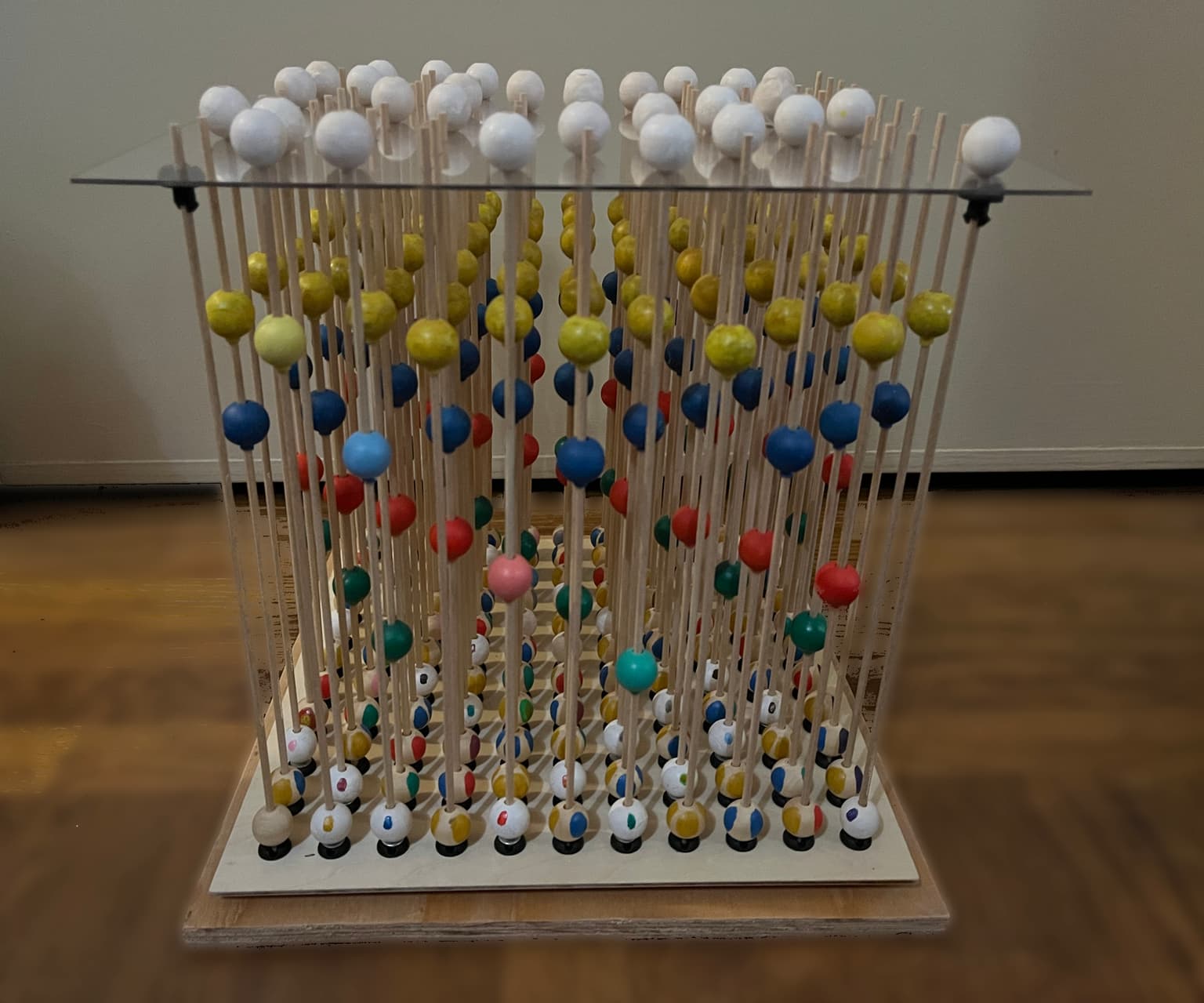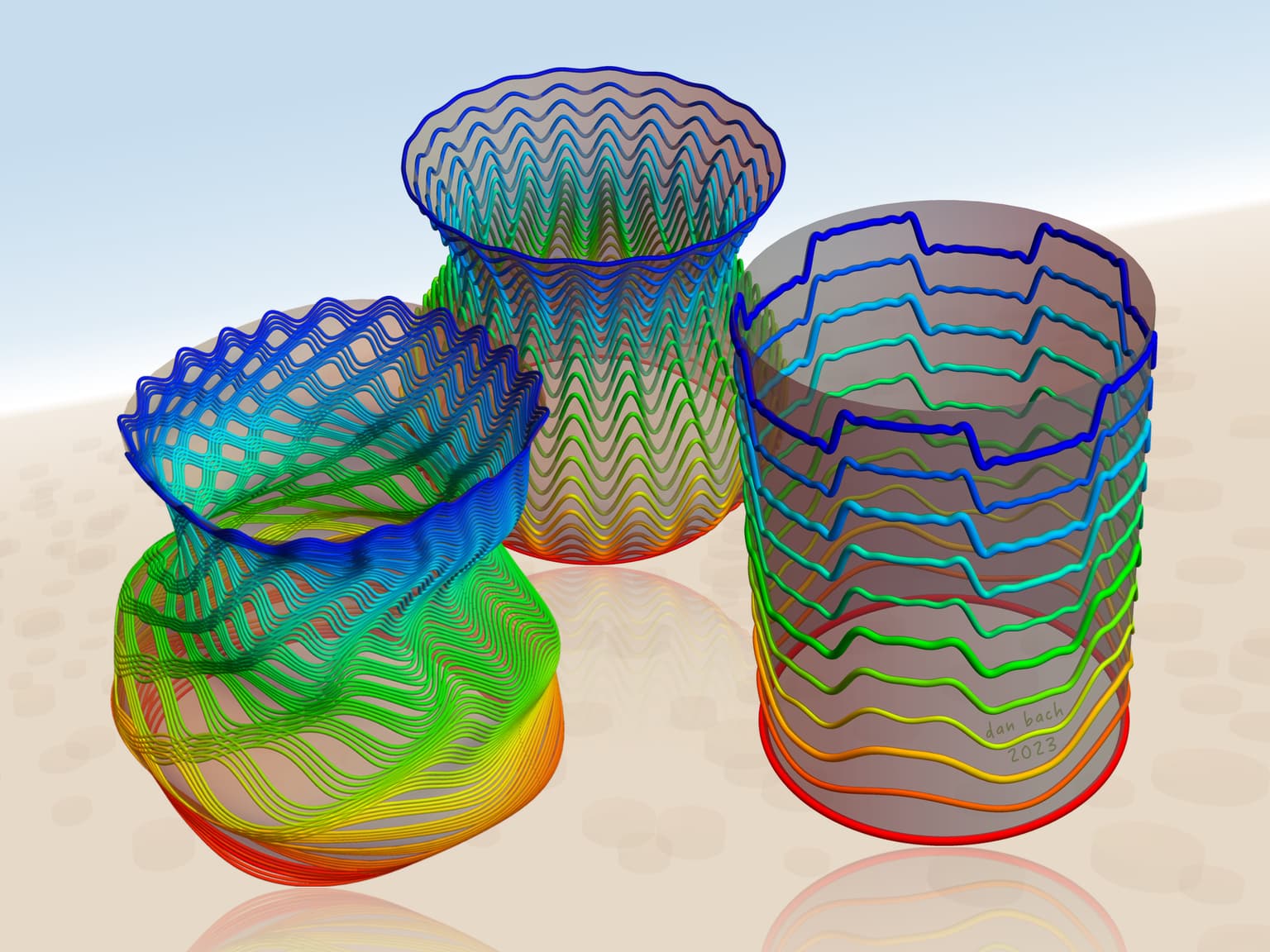2024 Joint Mathematics Meetings
Dan Bach
Artists
Dan Bach
3d math artist / book designer
dansmathshop
oakland, california, usa
Statement
After a 36-year teaching career, I am now a 3D math artist and interactive book creator. Students convinced me long ago that my nice-looking calculus graphs could qualify on their own as art. I now spend my time conceiving and creating math art, trying to bring the joy and visual beauty of mathematics to an unsuspecting audience. In the popular culture, math is commonly perceived as being separate from art, and people often cry "I'm not a math type, I'm creative!" But as makers and viewers of math art, we enjoy using both halves of our brains! My work displays mathematical relationships and visual patterns in a way that I hope makes people stop, notice, and say, "That's cool! That's math?"
Artworks

A Cubic Foot of Primes
30.4 x 30.4 x 30.4 cm
Wooden dowels, painted wooden beads, pegboard base, Lexan top
2023
